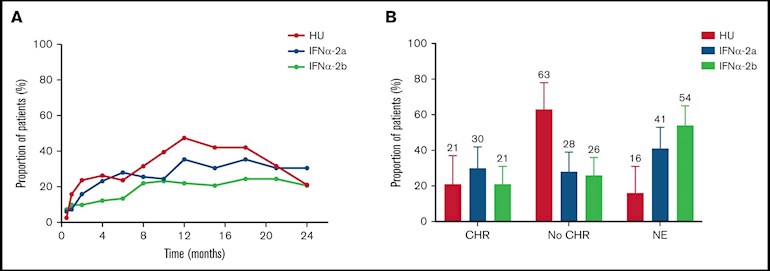This just came out. It is a treasure of info that I could spend many hours on. Just a couple bits:
ashpublications.org/bloodad...
--
The data were analyzed at 24 months, we know INF needs much longer for its full info to be known. But still interesting.
This trial is a source to compare the main two INFs before Besremi came about. I believe they compared IFNα 2(a) Pegasys and IFNα 2(b) PegIntron. They don't go deep enough here to explain.
The image here shows CHR for the two INFs and HU. Surprise is the large diff between the two INFs, almost same diff as 2(a) to HU. NE means not evaluated bec of discontinuing.
I've posted before about Bes being IFNα 2 (b). How would it have compared in this study vs the IFNα 2 (a) (PEG) And why did Besremi select the same (b) variant as Intron? They are not telling. It may still come down to the improvements in pegylation, in order of supposed worst to best in this subject it's Intron, PEG, Bes.
Could be the pegylation method matters more than the type of INF.
See reply for one more plot.
